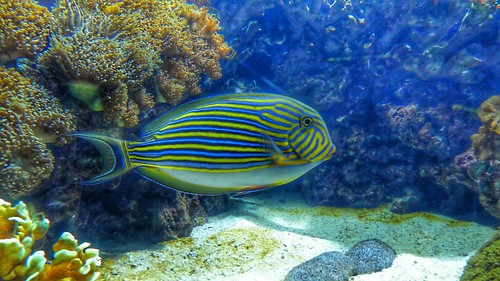The pGL3CCL20 constructs ended up transfected into AGS cells followed by H. pylori infection in the presence or absence of IL-22 (10 ng/ml). Cells transfected with pGL3-862 expressed related reasonably luciferase actions as in contrast with cells transfected with pGL33491 (Fig. three). Furthermore, IL-22 exerted equivalent inhibitory effects on luciferase routines in cells transfected with pGL3-862 and pGL3-3491 (p,.01 for pGL3-386 p,.05 for pGL3-3491) (Fig. 3). These outcomes suggest that the CCL20 promoter location liable for IL-22-attenuated CCL20 induction is located within 862 bp upstream of the transcription initiation web site.
H. pylori infection induces CCL20 expression in AGS cells. A, CCL20 mRNA expression in AGS cells infected with H. pylori at indicated MOI was analyzed by actual-time PCR at three-h put up-infection. B, CCL20 mRNA expression in AGS cells infected with H. pylori (MOI = fifteen) was analyzed by actual-time PCR at indicated instances. C, The cell society supernatants from AGS cells infected with H. pylori have been collected at the indicated occasions and the CCL20 protein amount was identified by ELISA. Knowledge signify the imply 6 SEM and reflect 1 representative of a few independent experiments.
IL-22 inhibits CCL20 promoter reporter routines in AGS cells infected with H. pylori. AGS cells ended up co-transfected with the CCL20 luciferase reporter construct pGL3-862 or pGL3-3491 along with pRL-TK Renilla luciferase plasmid. At 48 h after transfection, cells have been infected with H. pylori in the existence or absence of IL-22. Luciferase actions had been normalized to the expression of the cotransfected pRL-TK Renilla luciferase plasmid. The activity from each and every build is presented as the relative luciferase action of H. pyloriinfected cells as opposed to uninfected cells (open bar set as 1). Knowledge signify the indicate 6 SEM from three unbiased experiments.
The CCL20 promoter region has been reported to contain numerous putative binding websites for transcription elements, including NF-one, Ets, AP-1, C/EBP, NF-kB and SP1 [479]. These binding internet sites are schematically proven in Fig. 4A. , we created a collection of constructs with sequential deletions from the fifty nine end of the CCL20 promoter in pGL3-862 to positions -394 (pGL3-394), -204 (buy 115338-32-4 pGL3-204), -150 (pGL3-one hundred fifty), -112 (pGL3-112), -ninety one (pGL3-ninety one), and -50 (pGL3-50) (Fig. 4A) and transfected these constructs into AGS cells followed by H. pylori an infection in the existence or absence of IL-22. IL-22 therapy lowered H. pylori-induced CCL20 reporter activities about 40% in AGS cells transfected with all CCL20 deletion constructs apart from pGL3-50 (Fig. 4B), suggesting that the factor (s) dependable for the IL-22-attenuated CCL20 induction was positioned inside of the -91 to -50 area which contained putative binding internet sites for three transcription factors, particularly C/EBP, NF-kB and SP-one. To decide which transcription aspect(s) was liable for 18270317the IL-22-attenuated CCL20 induction, we performed site-directed mutagenesis on pGL3-862  to make constructs pGL3-C/EBPm, pGL3-NF-kBm, and pGL3-SP-1m which contained nucleotide substitutions in the consensus binding website for C/EBP, NF-kB, and SP1, respectively (Fig. 5A). We also deleted nt -91 to -fifty in pGL3862 to produce a deletion build pGL3-d91-fifty. These constructs ended up transfected into AGS cells followed by H. pylori an infection in the absence or presence of IL-22, and the luciferase activities in the transfected cells have been measured. IL-22 was able to inhibit luciferase routines in H. pylori-infected AGS cells transfected with both pGL3-C/EBPm or pGL3-SP-1m, but not in AGS cells transfected with pGL3-NF-kBm or pGL-d91-50 (Fig. 5B). These outcomes advise that NF-kB was concerned in the IL-22-attenuated CCL20 induction. To more validate this idea, an NF-kB luciferase reporter assemble containing 5 copies of an NF-kB response aspect was transfected into AGS cells adopted by H. pylori infection in the presence or absence of IL-22. As demonstrated in Fig. 5C, H. pylori-induced NF-kB luciferase
to make constructs pGL3-C/EBPm, pGL3-NF-kBm, and pGL3-SP-1m which contained nucleotide substitutions in the consensus binding website for C/EBP, NF-kB, and SP1, respectively (Fig. 5A). We also deleted nt -91 to -fifty in pGL3862 to produce a deletion build pGL3-d91-fifty. These constructs ended up transfected into AGS cells followed by H. pylori an infection in the absence or presence of IL-22, and the luciferase activities in the transfected cells have been measured. IL-22 was able to inhibit luciferase routines in H. pylori-infected AGS cells transfected with both pGL3-C/EBPm or pGL3-SP-1m, but not in AGS cells transfected with pGL3-NF-kBm or pGL-d91-50 (Fig. 5B). These outcomes advise that NF-kB was concerned in the IL-22-attenuated CCL20 induction. To more validate this idea, an NF-kB luciferase reporter assemble containing 5 copies of an NF-kB response aspect was transfected into AGS cells adopted by H. pylori infection in the presence or absence of IL-22. As demonstrated in Fig. 5C, H. pylori-induced NF-kB luciferase